Soviet aircraft missiles during the war
Work to create aviation rockets (RS) began in the USSR in the late 20s. In 1929, the first 82-mm turbojet projectiles were tested, stabilized by rotation. However, it was not possible to achieve acceptable results then. Accuracy was not satisfactory, in addition, about a third of the engine's powder charge was spent on rotation to stabilize the projectile in flight, which naturally affected the firing range.
Having failed with turbojets, the developers began to experiment with feathered ones. Initially, these were shells with ring stabilizers that could be launched from compact tubular launchers. But, despite all the efforts to achieve sustainable flight of the RS with ring stabilizers did not work.
Subsequently, it was decided to go to the shells with four-blade feathers. After a series of experiments and firing, it was experimentally determined that for 82-mm RS the optimal span is 200-mm, and for 132-mm RS, 300-mm.
The gauges of the Soviet 82 and 132-mm rocket projectiles are caused by 24-mm powder-checkers, which are used in a jet engine. Seven tightly laid checkers laid in the RS combustion chamber give an internal diameter of 72-mm, taking into account the 5-mm walls, the 82-mm goes out. In the same way, the caliber of the 132-mm RS is also obtained.
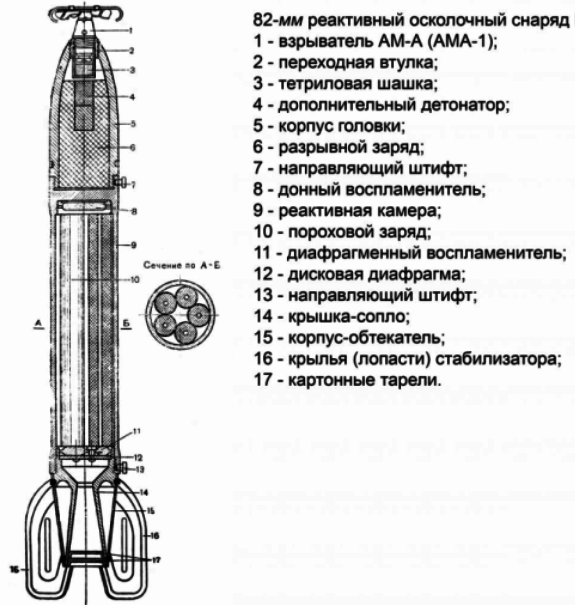
In 1935, the new operative 82-mm aircraft RS were first tested by firing from the I-15 fighter. The results were quite encouraging.
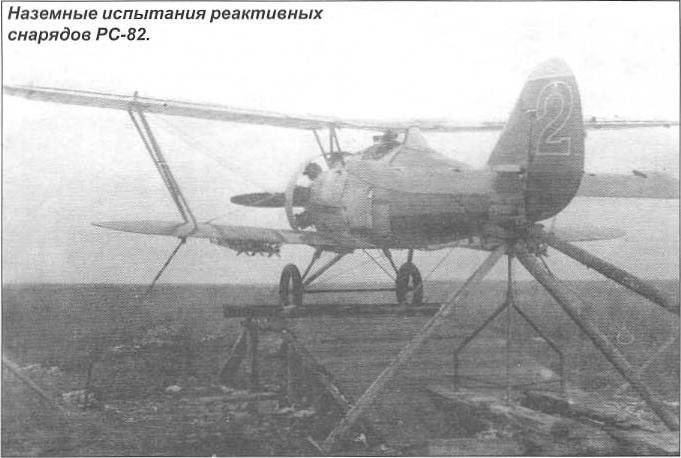
Within two years, simultaneously with the missiles themselves, the launching of launchers for them was underway. Suspension of fired shells caused a number of difficulties, after going through various options, it was decided to stop at the launcher, which was called the “flute”.
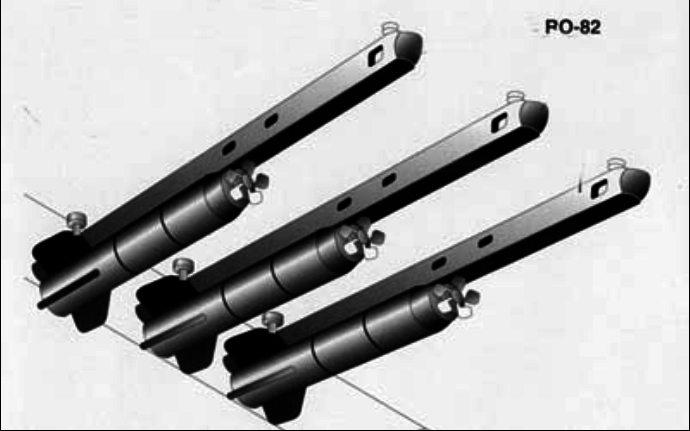
132-mm RSs were tested by shooting in the air in 1938 on an SB bomber. For firing at air targets, AGDT-I remote fuses were used, the response time of which was set on the ground before departure. The tests showed that subject to the revision of the remote fuses and the installation of an automatic tube installer on the aircraft (which was already implemented in anti-aircraft artillery), the PC-132 could successfully be used against enemy bombers, remaining outside the zone of fire of their defensive weapons. It was also quite realistic to create combat units for the MS with ready-made attack elements, which would increase the probability of hitting the target. Unfortunately, all this was never implemented.
On land targets, the RS launches were carried out from a gentle dive from a distance of no more than 1000 meters. In this case, the deviation of the projectiles from the aiming point was about 40 meters. The shooting was carried out on 2, 4 and 8 shells, the best results gave a salvo fire. Especially effective was firing at a single target as part of the link of their 4-x aircraft.
At the same time, during the tests, it was revealed that in a number of launches damage was observed in the skin of the aircraft by the jet engine. The maximum flight speed during the suspension of the guides with projectiles was reduced by 20-25 km / h. Increased climb time and inertia during maneuvers.
The PC-82 projectile had a weight of 6,82 kg, a fuel charge of 1,06 kg, a weight of explosives - 0,36 kg. The maximum speed was 350 m / s, and the range was 5200 m. For firing at ground targets, the projectile was supplied with a percussion fuse.
For attachment to the launcher, the projectile had four leading pins, and stabilization in flight was carried out by four stabilizers with a span of 200 mm. The halves of the stabilizer are stamped out of tin and joined together by welding. The assembled stabilizer was attached to the corners on the nozzle fairing.
The PC-132 had a generally similar design, but was the largest. The total weight of the rocket was 23,1 kg, of which the fuel charge - 3,78 kg, the explosive charge - 1,9 kg. The maximum firing range reached 7100 m.
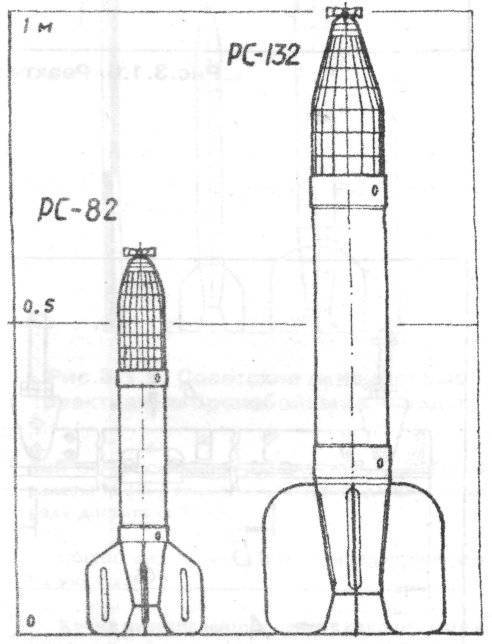
Both rockets had high-explosive fragmentation warheads with an external notch for proper crushing of the fragments. The presence of the notches spoiled the aerodynamics of the shells and worsened their ballistic qualities, later during the war they switched to the release of the RS with a smooth warhead.
In general, missile tests were successful, and they were put into service. Soon in 1939, during the conflict on the Khalkhin-Gol river, the first combat use of the aircraft RS-82 took place.
Various Soviet sources provide various details of the application of this weapons, the I-16 and I-153 fighters are described as “rocket carriers”, the number of Japanese aircraft shot down with the help of the RS is also different. In one these sources are unanimous: "the use of Soviet fighter-missile carriers was extremely successful and had a huge demoralizing effect on the enemy."
Famous Russian military historian A.B. Shirokorad researched this topic when working in archives with declassified materials for his book "Armament of Soviet Aviation 1941-1991". However, in reports on the actions of the I-153 fighters armed with the PC-82, he could not find any mention of the Japanese fighters shot down by them. It is noted that the fighters armed with RS-82 participated in 14 air battles, and the launch of rockets from them, as a rule, caused the formation of enemy fighters to disintegrate and mix. This greatly facilitated the actions of Soviet fighters in air combat. The rocket-carrying fighters themselves demanded a separate cover from above and behind. They could successfully operate, being in the ranks of the head, making attacks in the most favorable environment. After that, immediately went out of battle.
It is extremely doubtful that the Soviet pilots and their commanders in their reports to the higher command concealed the downed Japanese aircraft with the help of missiles. There is no mention of these weapons in the Japanese documents of the time and the questionnaires of captured Japanese pilots. Obviously, the first combat use of Soviet aircraft shells became “Soviet mythology” and has little to do with reality.
During the Winter War (1939-1940) against the ground targets in a limited scale were used armed with RS-132 SB bombers. It was noted that good results were achieved when the PC was launched from a distance of no more than 600 meters, at large distances the dispersion of projectiles turned out to be too large. Taking into account the successful experience of the use of RS with bomber against ground targets during the war with Finland, in 1940, mass production and their entry into the troops began. In total, more than 1940 thousand RS-135 and 82 thousand PC-31 missiles were launched in 132. In 1941, small experimental batches of 132-mm PCs were made with warhead incendiary, lighting and smoke equipment.
Contrary to popular belief, incendiary RSs equipped with termites were not massively released. The experience of the combat use of such shells in the initial period of the war showed their low effectiveness. Thermite mixture of iron oxides and aluminum powder has a high burning temperature, sufficient for burning through armor. But for ignition of the mixture requires considerable time. When hit in a tank such a warhead bounce, not having time to ignite.
By the beginning of the RS war, the biplane fighters I-15bis and I-153 were armed with assault air regiments. On the planes hung 4-8 PC-82.
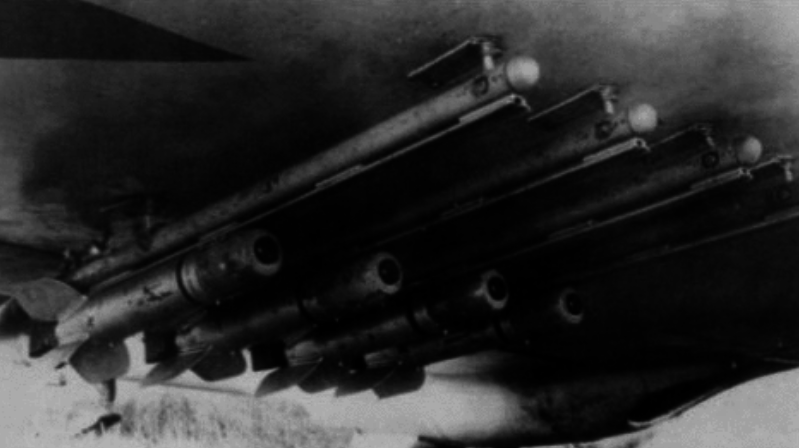
The armament of the newest single armored IL-2 attack aircraft was up to eight PC-132.
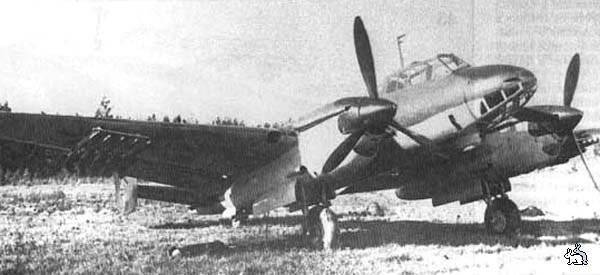
Shortly after the outbreak of hostilities, practically all types of Soviet fighters, light bombers and attack aircraft began to arm themselves with missiles. Prior to this, a significant part of the released jet guns and PCs were stored in warehouses for reasons of secrecy. At the same time, the questions of the tactics of the PC application were worked out.
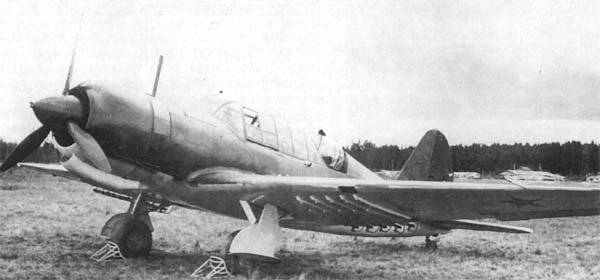
The Soviet Air Force urgently needed new types of weapons and ammunition that could compensate for the qualitative and quantitative German superiority. Missiles were often the only weapon on fighters sent to attack enemy troops, with which it was possible to fight German armored vehicles.
There were attempts to use the PC-82 in air battles, for this purpose shells with remote fuses were used, the firing of which occurred after a certain time after the launch. However, against enemy fighters, the missiles, due to their low flight speed, were ineffective, besides, during firing, it was necessary to precisely maintain the distance to enemy aircraft.
The RS-mounted jet implements suspended under the wing had significant frontal resistance and weight, thus reducing the key characteristics for air combat — speed and maneuverability.
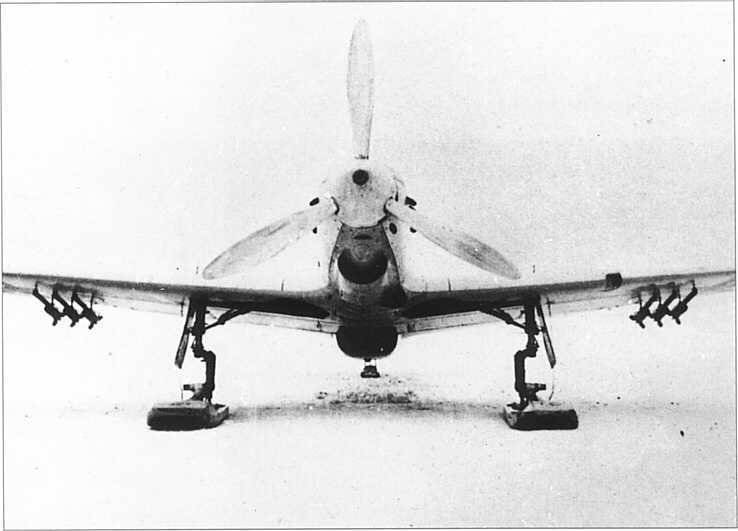
Much more common was the situation when the Soviet fighters sent to attack were forced to engage in air combat. In this situation, the probability of hitting an enemy aircraft with a missile with an instantaneous contact fuse was even less, but due to the fact that such episodes of air combat with the use of MS occurred more often, there were more enemy aircraft brought down by missiles.
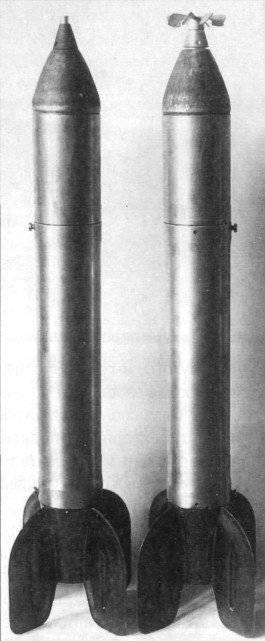
In addition to Soviet aircraft, British Hurricane fighter jets armed themselves with Lend-Lease missiles. With the help of the RS to some extent compensated for the weakness of their machine-gun armament.
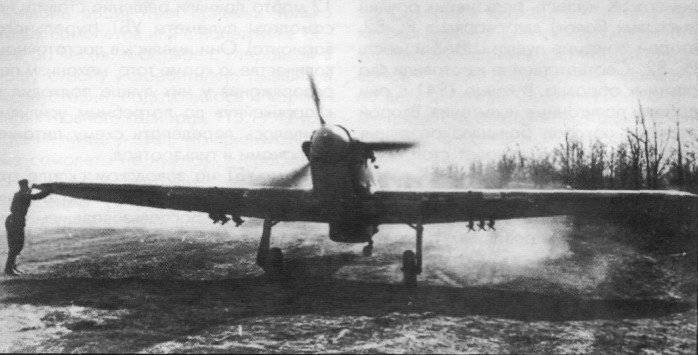
A few months after the start of the mass use of RS from the front, signals began to arrive about their supposedly low efficiency. In this regard, in September 1941, test firing rockets were organized at the Air Force training ground. These tests showed low efficacy of MS against single point targets. The average percentage of hits in a single stationary tank when firing it from a distance of 400-500 m was 1,1%, and in a tight tank column - 3,7%. When firing, it turned out that the RS-82 can defeat German light tanks like Pz.II Ausf F, Pz.38 (t) Ausf C, as well as the Sd Kfz 250 armored car only with a direct hit. Ruptures of 82-mm shells at a distance of more than 1 m from the tank did not cause damage to him. Shooting was carried out by single shells and in volleys of 2, 4 and 8 shells. The highest performance was obtained with volley fire.
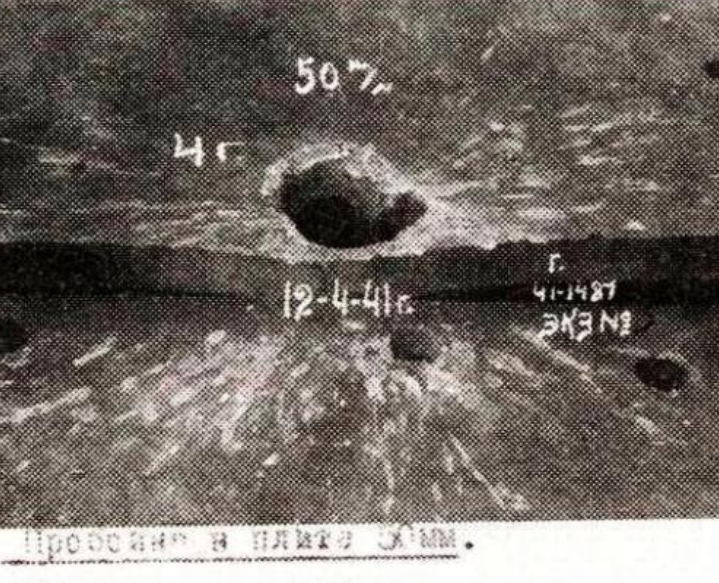
PC-132 showed even worse results. Of the 134 shells fired, none hit the mark. And despite the fact that the tests were held at the site in ideal conditions. At the front, pilots on unarmored airplanes often launched a PC from the 700-1000 distance, trying to stay in the effective fire zone of the German small-caliber anti-aircraft artillery (MZA) for the minimum time. In addition, it turned out that due to the negligent handling of missiles during transport to the front, their tin stabilizers were often bent, which adversely affected the accuracy of firing.
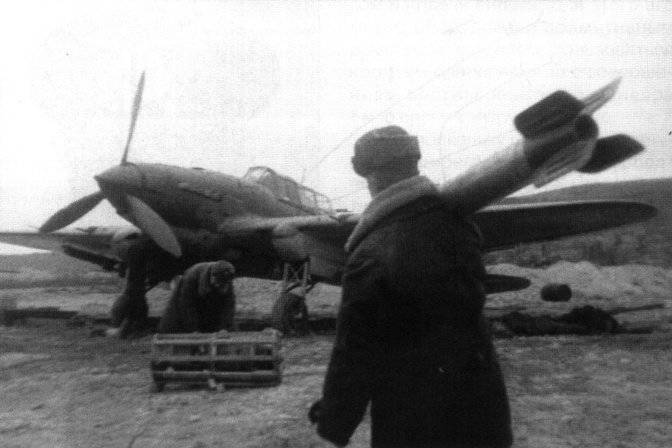
At the same time, the RS was a very effective weapon against area patrols (artillery-mortar batteries and the positions of troops) and linearly elongated targets (columns of troops and trains).
In 1941, aviation missiles with an armor-piercing warhead - RBS-82 and RBS-132 - were specially created for fighting tanks. Which, when hit along the normal, pierced 50-mm and 75-mm armor, respectively. These shells were created on the basis of the PC-82 and PC-132. In addition to the new warhead, the projectiles had a more powerful engine, thanks to this, the RS flight speed and the probability of hitting the target increased. As shown by ground tests. RBS penetrated tank armor and then exploded, causing severe damage inside the tank. The armor-piercing RSs were successfully used in August 1941 battles. However, their mass release began only in the second half of the war. Despite the improved accuracy and armor penetration, rockets did not become an effective means of fighting tanks. Penetration was highly dependent on the angle of encounter with armor, and the probability of hitting remained insufficient.
In the arsenal of attack aircraft, along with the RBS-132 missiles, which had armor-piercing warheads, as a means of fighting German armored vehicles, the ROFS-132 rocket with improved, compared to the RBS-132 or PC-132, fire accuracy was firmly established. The warhead of the ROFS-132 projectile ensured the penetration (through a direct hit) of armor of medium-sized German tanks.
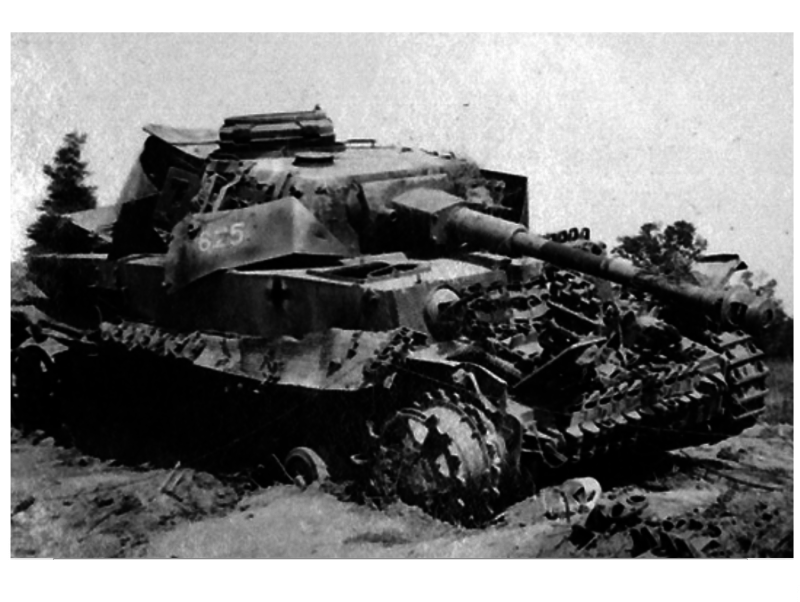
When ROFS-132 was broken near the tank at a distance of 1 m from it, the fragment kinetic energy angle in 30 was sufficient to break through the German tank armor with a thickness of up to 15 mm. At an elevation angle in 60 degrees, a gap of ROFS-132 at a distance of up to 2 meters from the tank ensured penetration of tank armor with a thickness up to 30 mm by fragments. With a direct hit in the tank Pz. IV armor, as a rule, made its way, and the equipment and crew inside the tank were put out of action.
Unfortunately, despite the increase in accuracy of ROFS-132 firing, their effectiveness in firing at tanks and the other was still unsatisfactory. The best results of ROFS-132 were given when shooting at large area targets - motorized columns, trains, warehouses, field and antiaircraft artillery batteries, etc.
In 1942, RBSK-82 missiles with a cumulative warhead were developed. On tests, armored-piercing projectiles of a cumulative action pierced armor with a thickness of up to 50-mm. In most cases, the penetration of armor was accompanied by a metal spall around the outlet.
The test committee concluded that low armor penetration is a consequence of the delay in triggering the fuse "from the rebound and the cumulative jet is formed when the deformed cone."
It was recommended to refine the fuses and submit projectiles for re-testing. Cumulative MS were not accepted for service due to the lack of a clear advantage over standard rocket projectiles. On the approach was already a new, much stronger weapon - PTAB.
In the second half of the war, the value of missiles as a means of destruction decreased slightly. After the launch of the production of a sufficient number of specialized Il-2 attack aircraft, the practice of mass RS suspension on fighters was discontinued.
At the same time, rockets were used from attack aircraft throughout the war. Moreover, in the assault regiments there was the practice of installing additional jet guns on the IL-2, bringing the number of RSs suspended to 12 units. This was due to the fact that the missiles proved to be a very effective anti-aircraft weapon. In addition to the powerful fragmentation of action, MS had a strong psychological effect on the calculations of the Ministry of Defense. Attack aircraft armed with additional RS, as a rule, were allocated to suppress anti-aircraft guns.
The RS-132 proved to be a good weapon against the German high-speed amphibious landing barges. These small, maneuverable, well-armed boats were not easy to sink torpedoes and bombs.
In addition to the IL-2, naval aviation, launching for six RS-132, were installed on the IL-4Т torpedo bombers in naval aviation units. The RSs were intended primarily to suppress anti-aircraft fire conducted from enemy ships during a torpedo attack. On part of the bombers to protect against enemy fighters, jet guns were mounted for firing back.
Separate mention should be made of the various ground-based handicraft launchers PC-82 used for air defense of airfields in the initial period of the war.
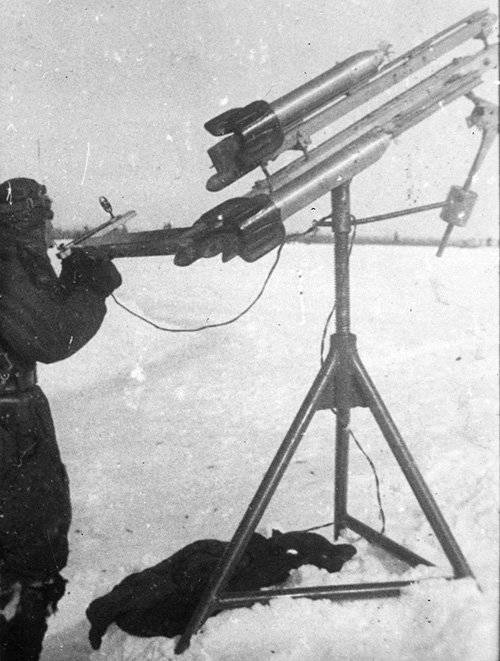
Shooting from such installations, which were primitive sighting devices, was carried out by projectiles with remote fuses in the course of enemy aircraft.
Their effectiveness was not great, the installations themselves are not safe for shooting, but they are often the only means of air defense of field airfields, allowing the Germans to scare away.
In general, assessing the role of Soviet aircraft rockets in the Great Patriotic War, it can be noted that with proper and proper use of them RS was a powerful means of defeating enemy personnel and equipment.
Based on:
http://alternathistory.org.ua/oleg-rastrenin-shturmoviki-velikoi-otechestvennoi-voiny-glava-3-udarnye-bisy-chaiki-i-drugie
http://www.vonovke.ru/s/rs-82_-_boevoe_primenenie
Shirokorad A.B. Soviet aviation armament 1941-1991.Minsk, Harvest, 2004.
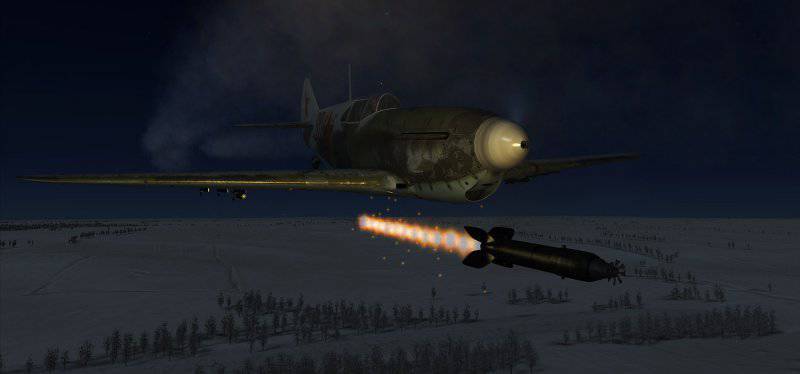

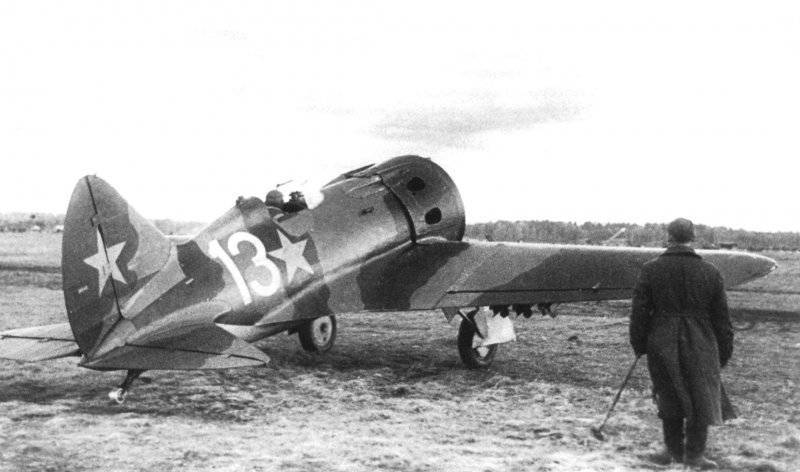
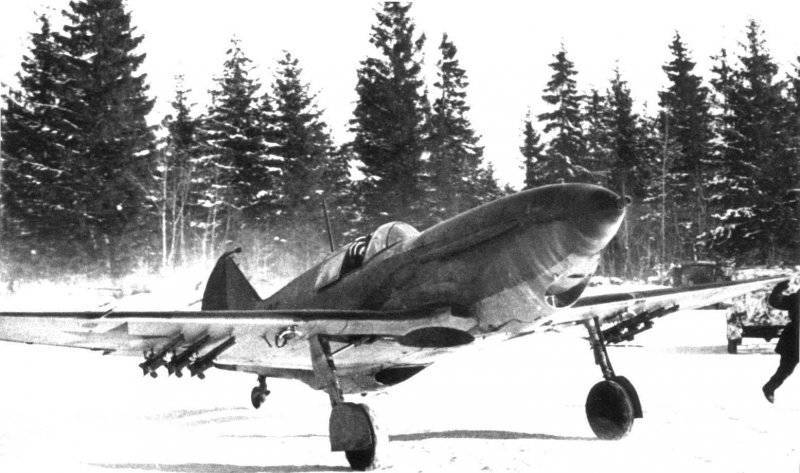
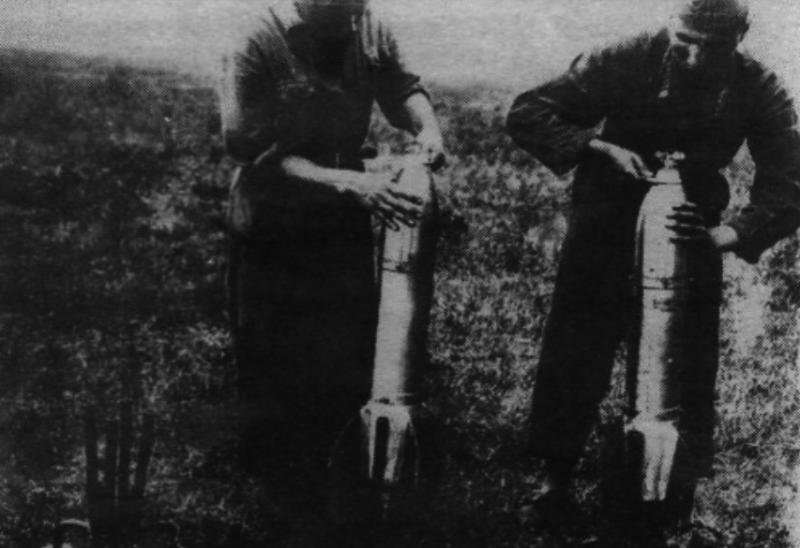

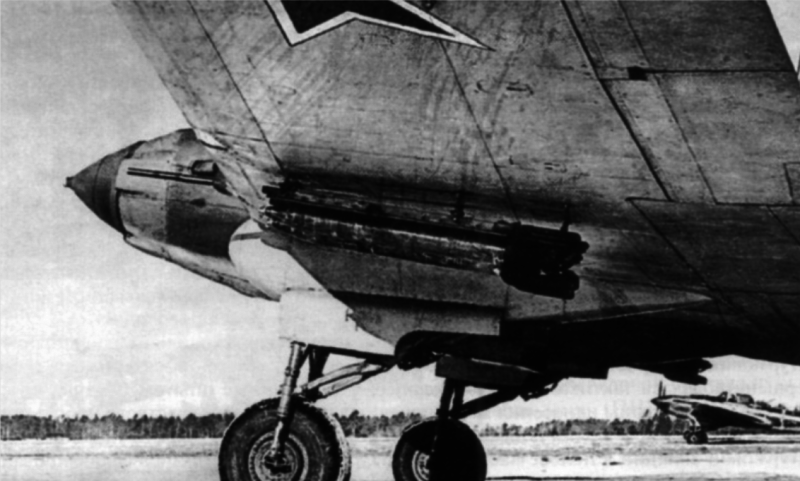
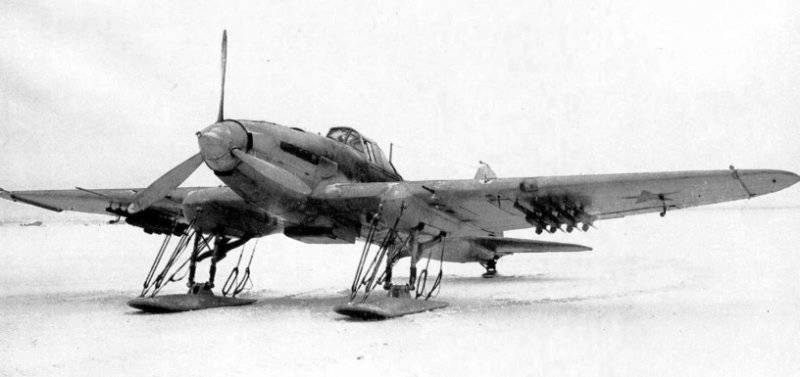
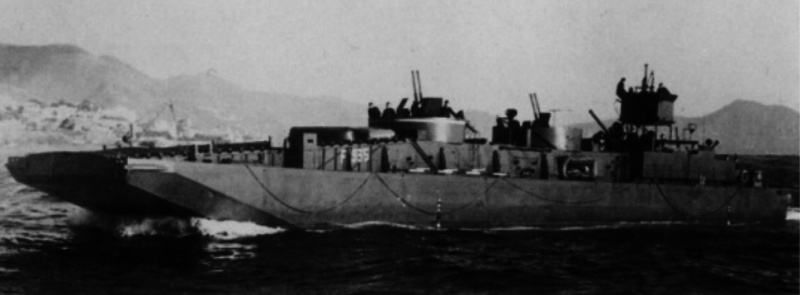
Information